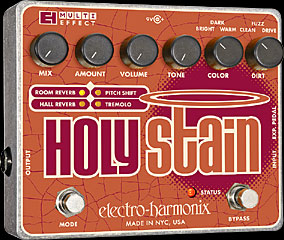I take a few days off and the next thing you know, I’ve got about three hundred unread items in Google Reader. Some of these items are from that haul and some of them have whiskers on them (meaning older than three days) and some of this isn’t related to anything at all.
- Let’s start with a topic that I’ve had rattling around the old coconut for a few decades now. It was nice to see Stephen Goldmeier raise the issue over at io9, but i think his discussion only begins to scratch the surface. The issue is aliens who, as Goldmeier puts it, are truly alien. Forget the whole to arms, two legs, two eyes deal (Avatar – looking at you right now). In fact, forget the whole corporeal existence. Let’s get into something really strange. Noticeably absent from Goldmeier’s list is 2001: A Space Odyssey (although Rendezvous with Rama is discussed).
- One of the most consistently original and authentic voices in music is gathering steam for a new Release. From Never Get Out of the Boat, I learned this morning that the Latin Playboys (Los Lobos’ David Hidalgo and Louis Perez) are gearing up for a release and tour. Here is a little sample of the good work they do:
- And, if you are a Battlestar Galactica fan, and you miss your favorite post-apocalyptic series, this should help cure you:
- I mentioned this story over at Tumblr about the possible shortcomings of iPhone, but it’s so preposterous that I need to post it again. In short, there may not be anything wrong with AT&T’s network.
- And, speaking of cell phones, since it is now officially the first half of 2010, may I have an update for my HTC Hero, please?
- For my classmates who were in Providence, RI back in the early 90’s, it has been exciting to watch the meteoric rise of RISD grad Shepard Fairey. Although my local baseball squad couldn’t close the deal in the World Series, we had some great fan-sourced (unlicensed) shirts come along the way. Mr. Fairey’s work was the inspiration for my favorite of these, and it’s good to know that he’s not intending any litigation.
Now I’m going back to sitting on my ass for one more day, getting ready to listen to the Eagles (vs. Dallas) on the radio and walking my big puppy in the sub-zero wind chills.





